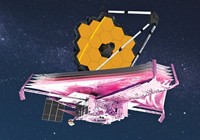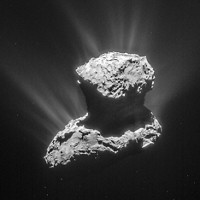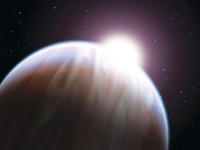Advertisement
Grab your lab coat. Let's get started
Welcome!
Welcome!
Create an account below to get 6 C&EN articles per month, receive newsletters and more - all free.
It seems this is your first time logging in online. Please enter the following information to continue.
As an ACS member you automatically get access to this site. All we need is few more details to create your reading experience.
Not you? Sign in with a different account.
Not you? Sign in with a different account.
ERROR 1
ERROR 1
ERROR 2
ERROR 2
ERROR 2
ERROR 2
ERROR 2
Password and Confirm password must match.
If you have an ACS member number, please enter it here so we can link this account to your membership. (optional)
ERROR 2
ACS values your privacy. By submitting your information, you are gaining access to C&EN and subscribing to our weekly newsletter. We use the information you provide to make your reading experience better, and we will never sell your data to third party members.
Astrochemistry
Methanol could survive the birth of a solar system
Observation suggests complex molecules could exist on planets throughout universe
by Sam Lemonick
May 12, 2021
| A version of this story appeared in
Volume 99, Issue 18

Methanol is known to be a bridge between simple molecules in space and more complex ones. New observations suggest it survives the harsh conditions that form solar systems, which means chemical complexity may be more widespread in the universe than scientists thought (Nat. Astron. 2021, DOI: 10.1038/s41550-021-01352-w).
In space, methanol predominantly forms from carbon monoxide ice, and is a precursor to esters, ketones, aldehydes, and other types of molecules. But Alice Booth, a postdoctoral research at Leiden University, says she and her group couldn’t explain its presence around a young star about 315 light years away named HD 100546. The disk of gas and dust surrounding the star—the material that can eventually condense into planets—is too hot for CO ice, and other chemical pathways can’t account for the abundance they observed.
Instead, they suggest methanol can survive the heat and radiation that is generated as a protoplanetary disk forms from cold interstellar dust and gas. Astrochemist Karin Öberg of Harvard University says evidence from our own solar system has made scientists suspect organic molecules from interstellar space might make their way into comets, asteroids and planets, “but this is the first clear evidence of this process for an extra-solar system.” Öberg wasn’t part of this project but has current and past collaborations with some of the researchers.
The finding suggests that complex molecules are widespread in the universe, which could mean the ingredients for life are everywhere. “This work implies that stars of all shapes and sizes retain chemically rich material from their birth environment, and therefore if planets can form, they’ll have ‘the right stuff’ for life at the ready,” says Ilse Cleeves of the University of Virginia, who studies protoplanetary disks and was not a member of the research group.
The researchers used the Atacama Large Millimeter/submillimeter Array to make these observations. Booth says the group hopes to make similar observations of other disks and look for molecules like ether, acetaldehyde, and methyl formate.





Join the conversation
Contact the reporter
Submit a Letter to the Editor for publication
Engage with us on Twitter